8. APPLICATION TO TWO TEXTS

Exemple 34 : J.S. Bach : The Well-Tempered Clavier, vol. I, prelude no 1, BWV 846
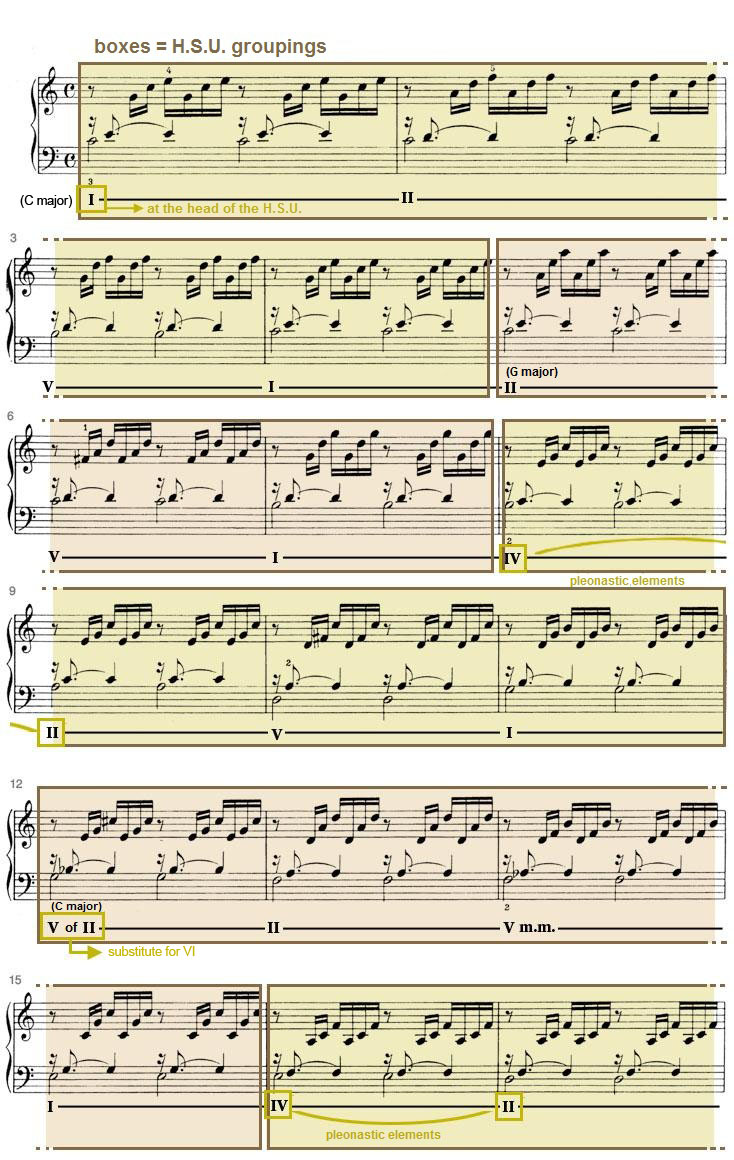

Note that
measures 24 to 27 of this prelude could have constituted an independent H.S.U.
which would contain exclusively the function V and which would overlap with the preceding
H.S.U.. It is true that if we seek a uniform analytical perspective, we would
tend to choose a division into two overlapping H.S.U.'s in measures 20
to 24 and 24 to 27 since in the context of the whole piece the
H.S.U.'s are usually four measures long. The dominant pedal could,
however, tempt us to justify a rupture in this organizational pattern.
Admittedly, the isorhythmic nature of the text makes its division more
problematic at times and therefore often allows for more than one possible
interpretation.
H.S.U. DIVISION:

Example 35


Example 36

Example 37
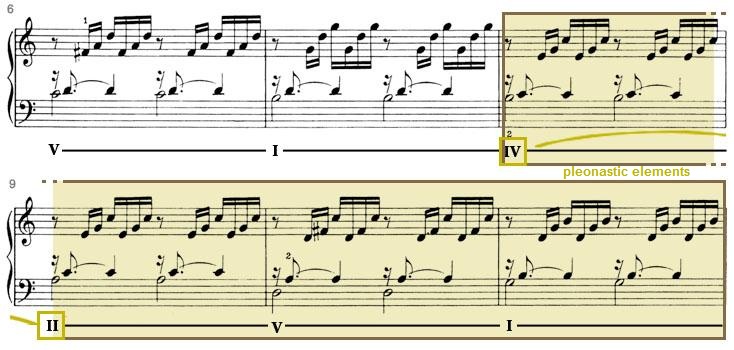

Example 38


Example 39
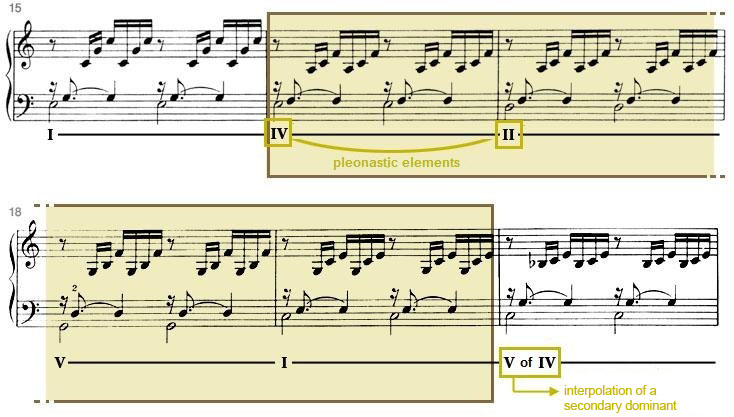

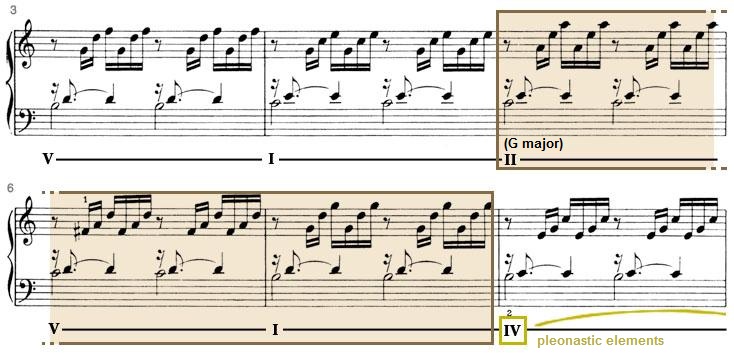
Example 40
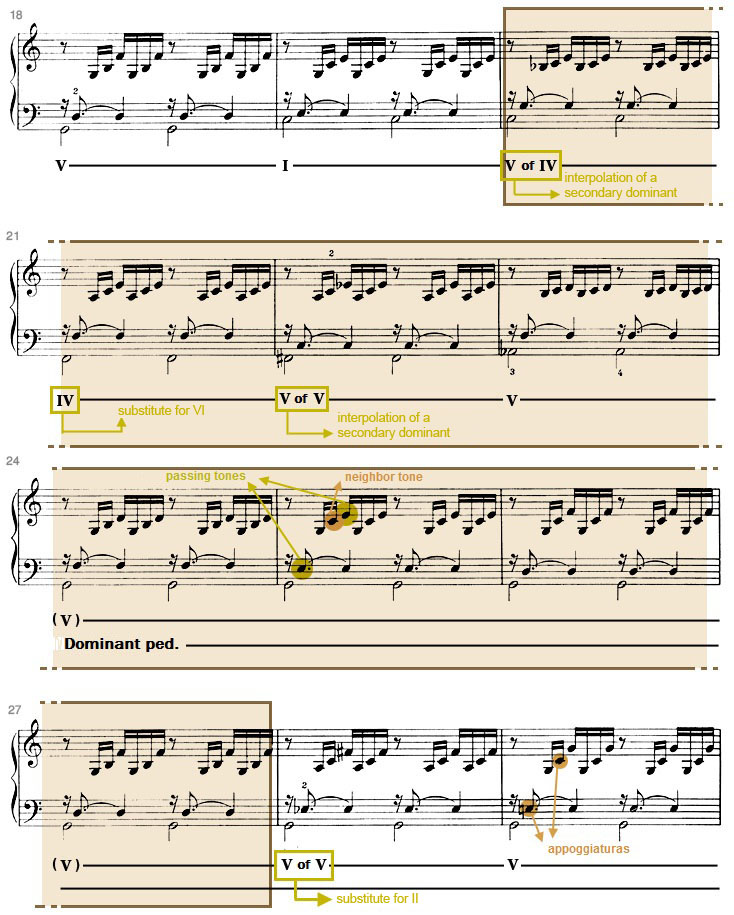

Example 41
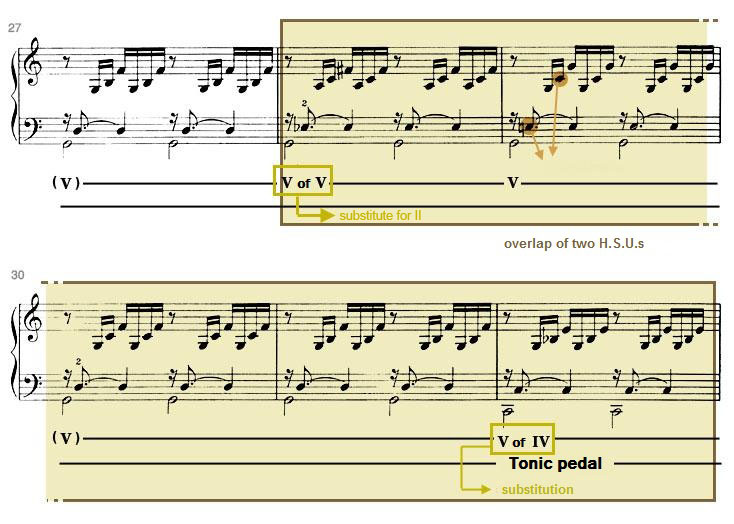

Example 42

Let us recall that division into H.S.U.'s isolates units which have independant
meaning and a specifically tonal autonomy and which, therefore, result
in the unequivocal designation of a tonic. It is not necessary, then,
to conduct a formal analysis where we must consult the organizational
parameters of the musical discourse and where, in the case of this
prelude, we would need to take into account not only the relationships
of successive tonalities but also the relative importance of the the
cadential gestures such as those in measures 10-11, 18-19, and 31-32.

